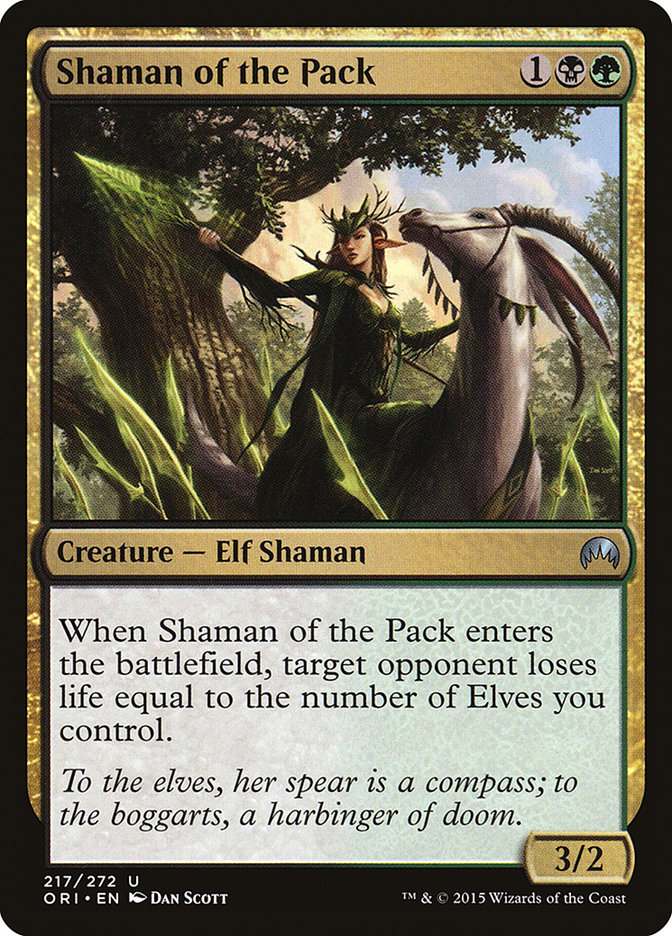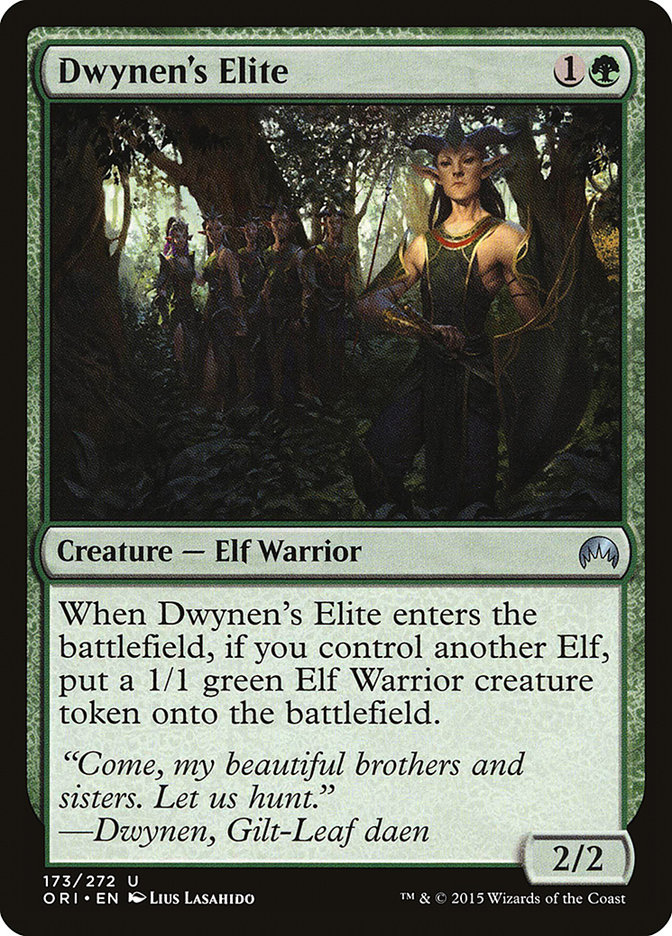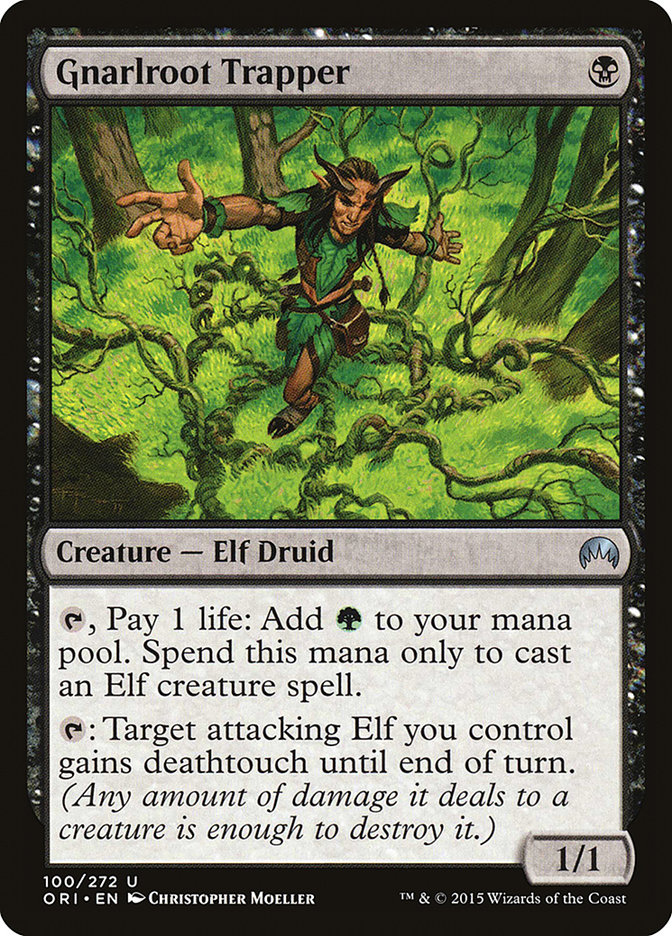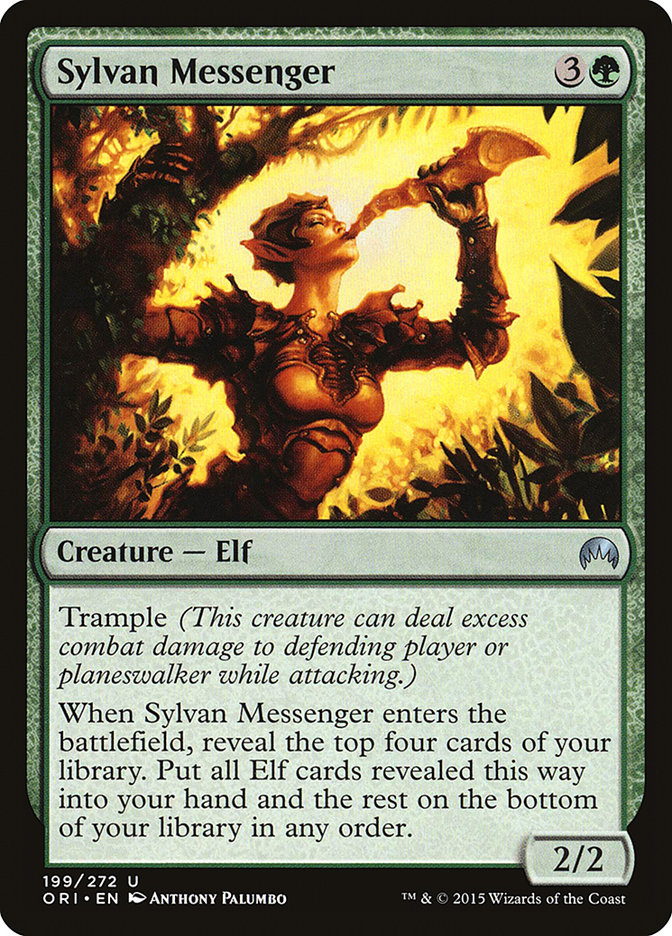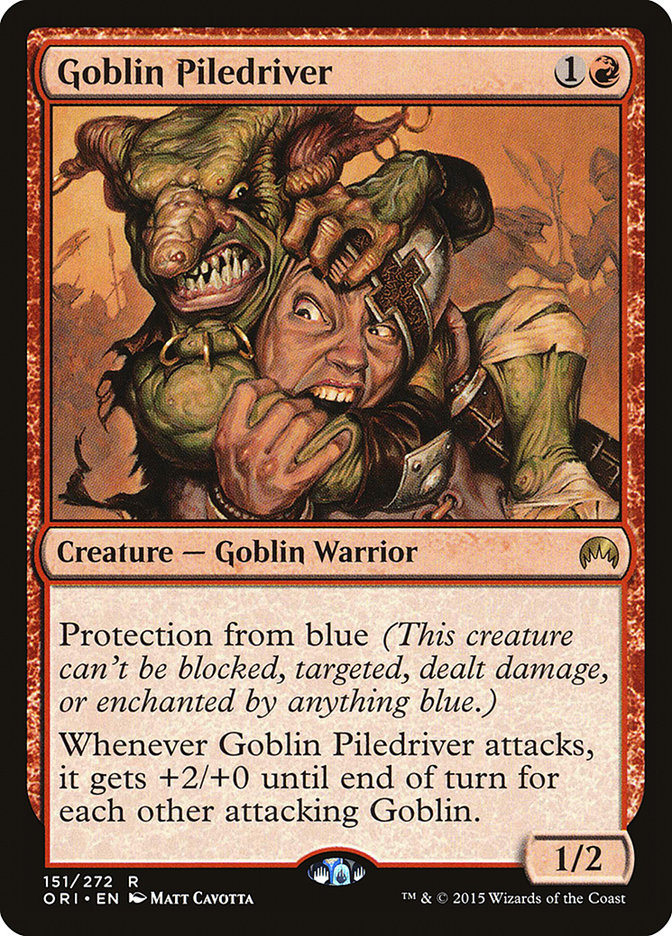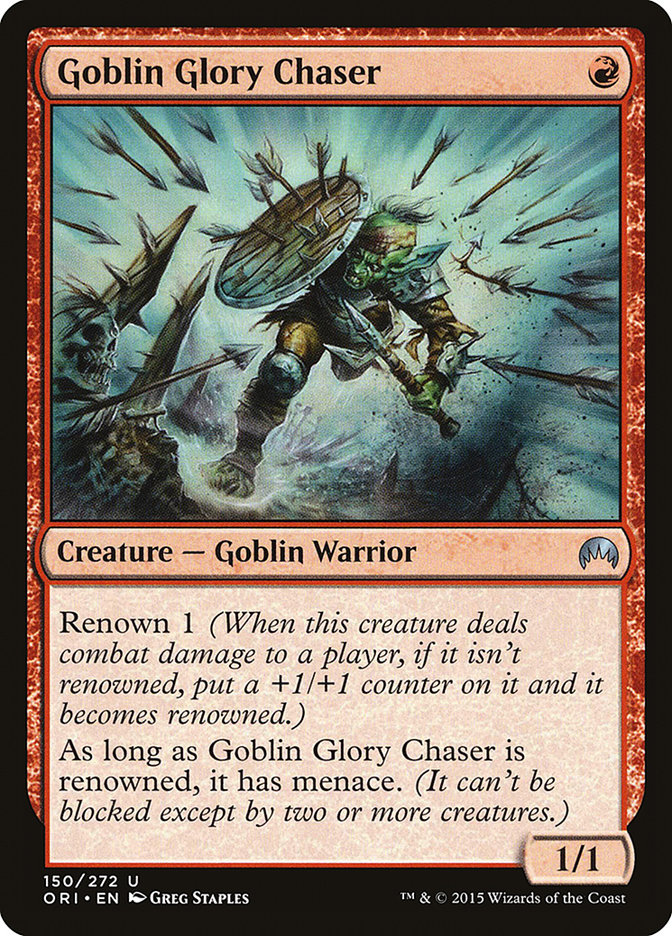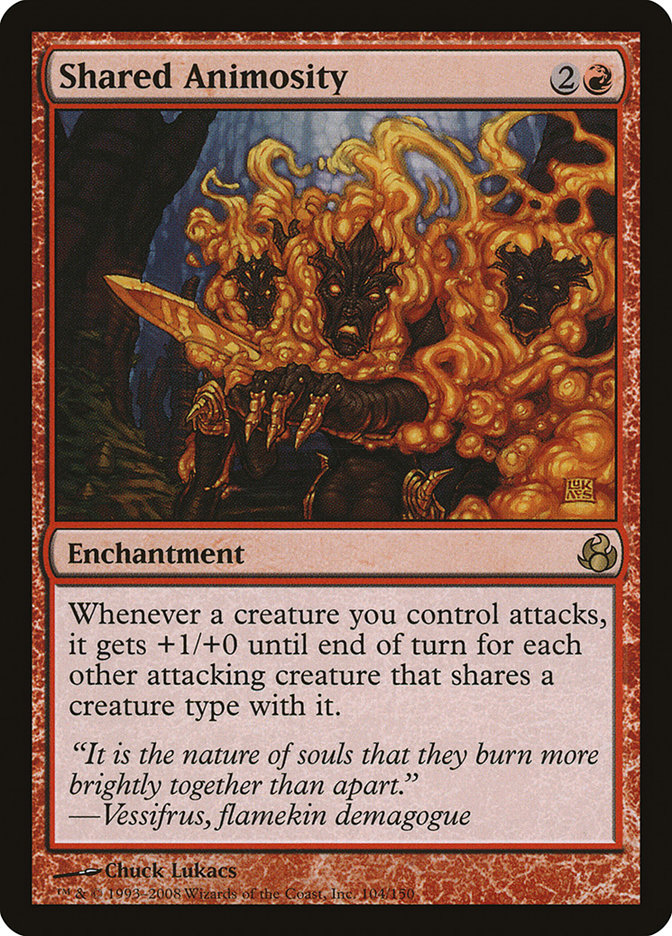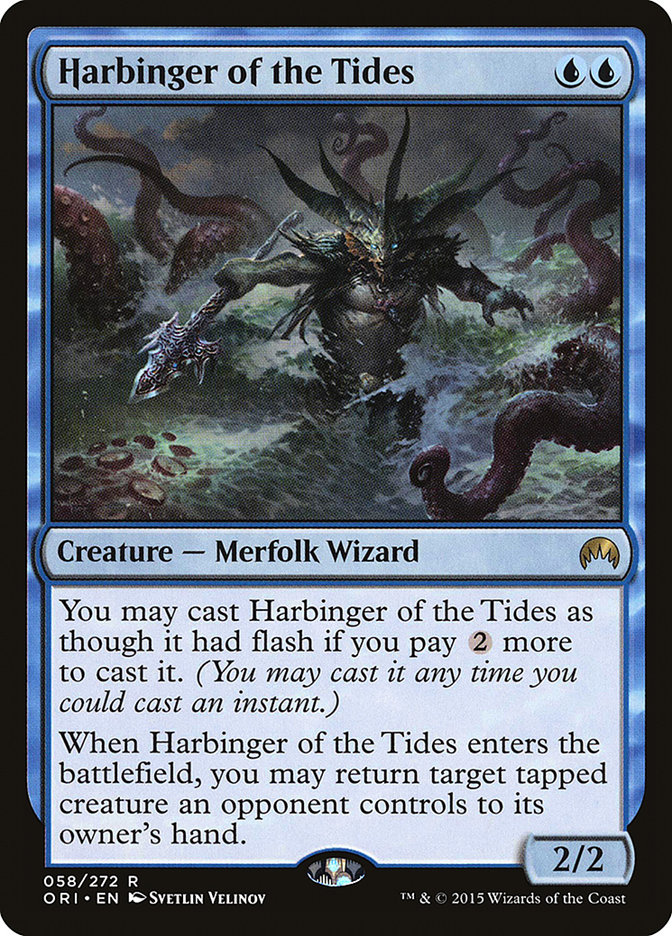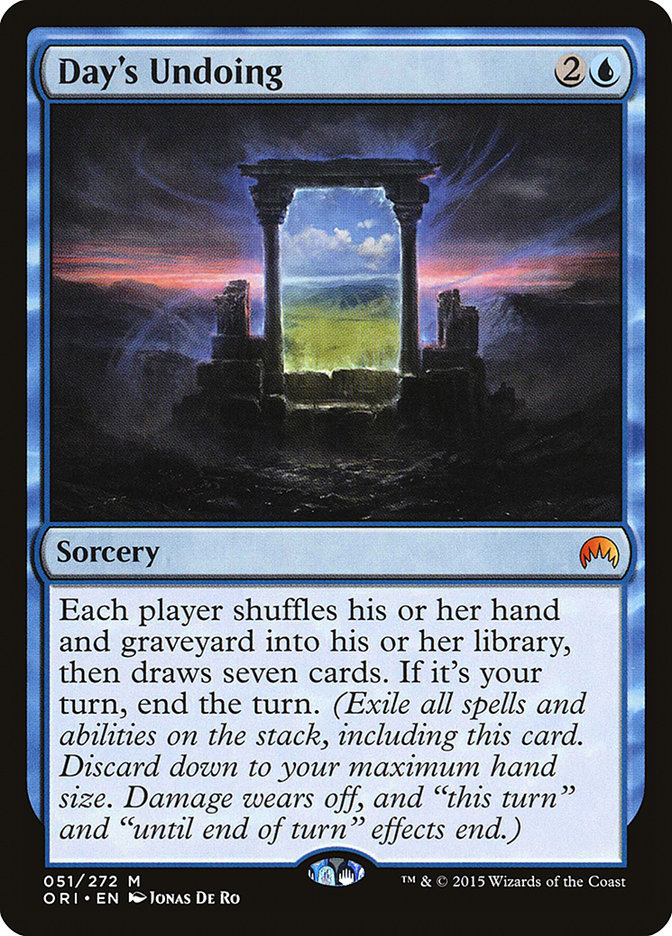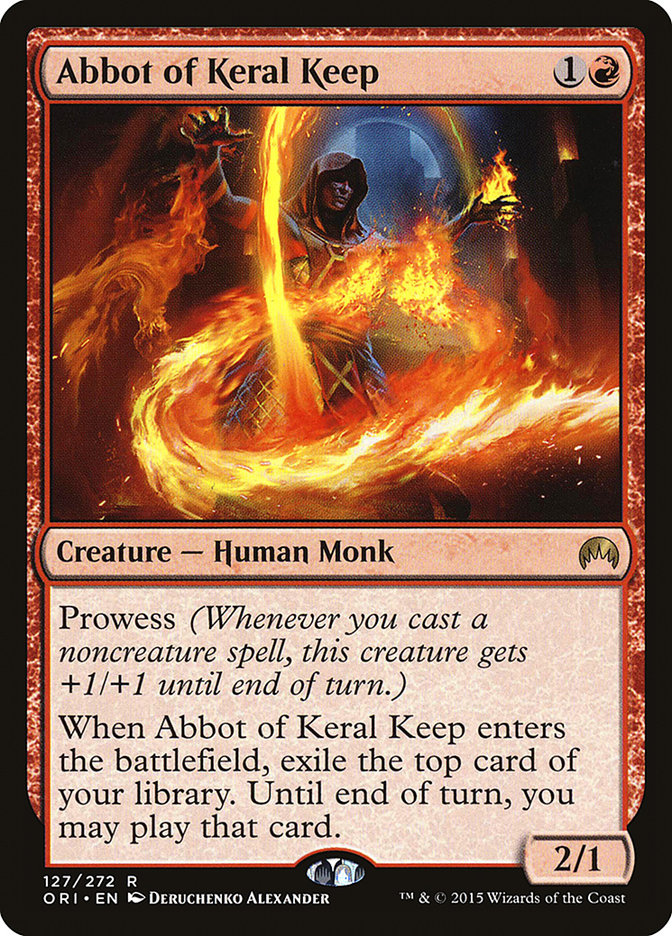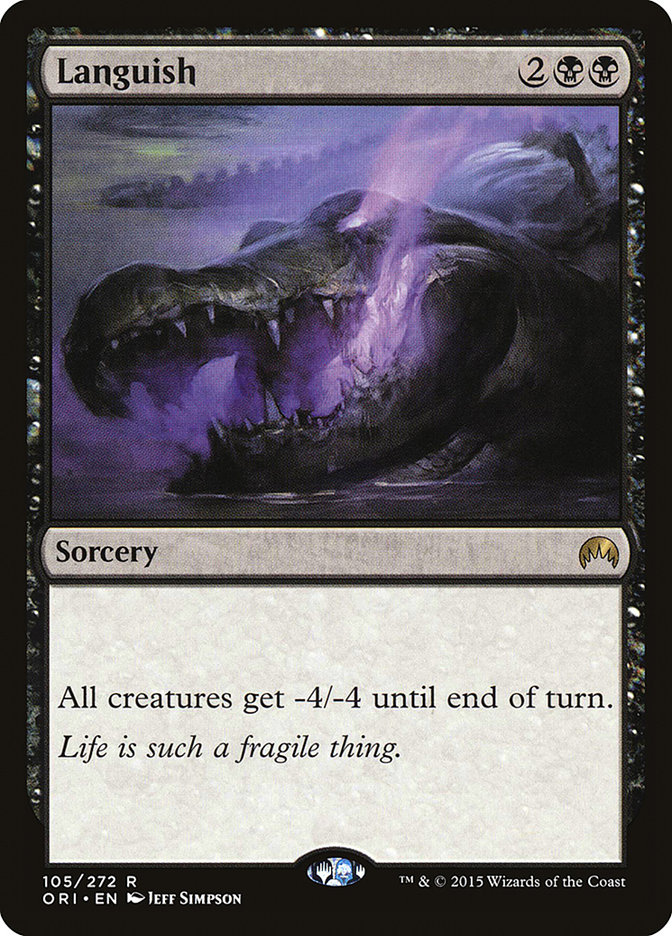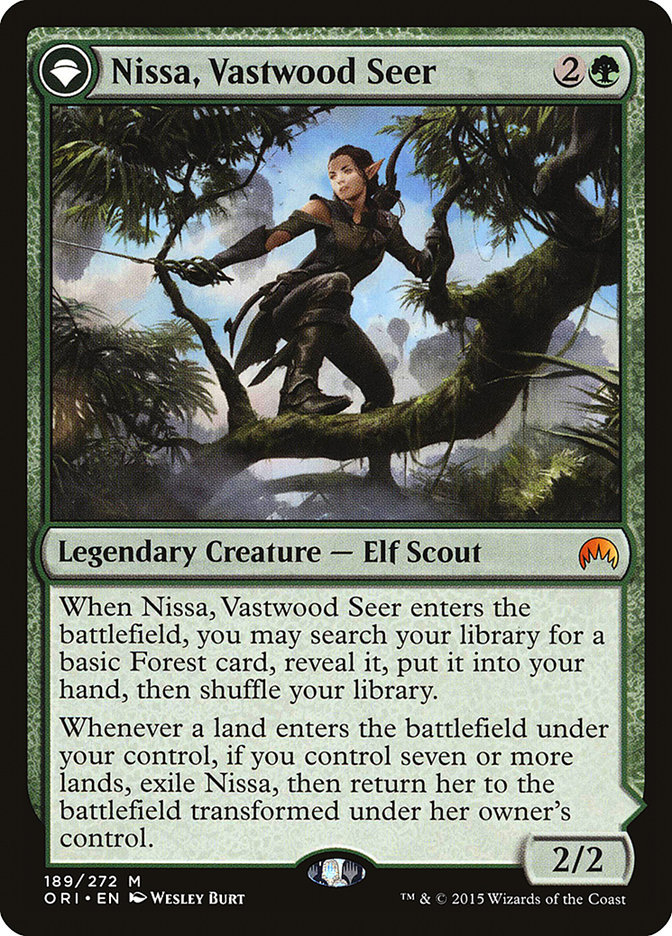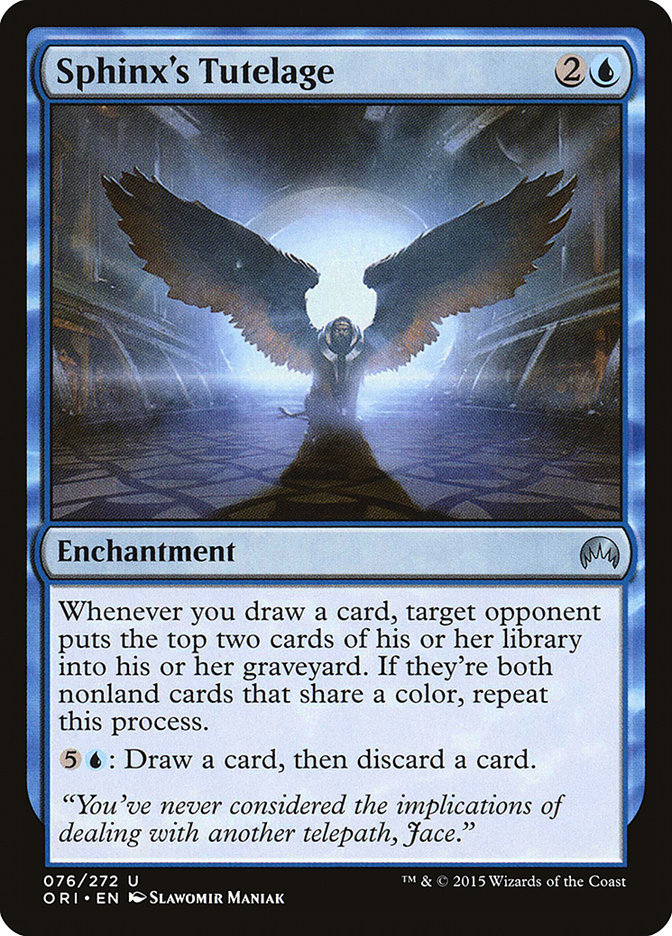Magic Origins isn’t just a Standard powerhouse. It’s also packed with Modern-worthy cards, from obvious build-arounds like Goblin Piledriver and Shaman of the Pack to generally-powerful cards like Abbot of Keral Keep and Nissa, Vastwood Seer. There are a lot of cards (and decks) I’d like to look at today, so let’s just dive right in.
Elves was already a fine deck before Magic Origins, and it picked up two major hits (Shaman of the Pack and Dwynen’s Elite) as well as a few possible role-players.
Creatures (38)
- 4 Llanowar Elves
- 1 Sylvan Messenger
- 4 Heritage Druid
- 4 Nettle Sentinel
- 4 Elvish Visionary
- 4 Elvish Archdruid
- 3 Ezuri, Renegade Leader
- 4 Elvish Mystic
- 4 Dwynen's Elite
- 2 Gnarlroot Trapper
- 4 Shaman of the Pack
Lands (18)
Spells (4)
Sideboard

Shaman of the Pack is the final straw that pushes us totally away from combo into full-on beatdown mode. We’re usually going to have so many Elves in play by turn four or five that Shaman of the Pack is often going to take a full turn off of the clock.
We might still want some amount of Chord of Calling, since it does give us extra value out of our sideboard slots, but I want to try Sylvan Messenger to help us grind out Grixis, Jund, and Abzan.
Dwynen’s Elite is a much better Wren’s Run Vanquisher since its two bodies make it durable against removal, and it pays you double from Shaman of the Pack, Elvish Archdruid, and Ezuri, Renegade Leader.
Gnarlroot Trapper might not be worth it, since we already have access to Elvish Mystic and Llanowar Elves; however, it’s kind of nice to have the Deathtouch option for helping punch through Tarmogoyfs and Siege Rhinos.
There’s a good chance Sylvan Messenger is just too slow, but with this many mana Elves it’s nice to have another way to refill besides Collected Company. Besides, there are a lot of midrange decks that play an attrition game, whether blue (Grixis, Jeskai) or not (Jund, Abzan).
Magic Origins had an above-average amount of tribal goodness across the board, so Elves is far from the only beneficiary. Probably the most-hyped Magic Origins card for Modern has been this little guy right here:
Goblin Piledriver is a very powerful tool for letting Goblins actually race combo decks and it can just brutally punish anyone who is caught without removal.
Creatures (27)
- 4 Goblin Piledriver
- 4 Mogg War Marshal
- 4 Goblin Chieftain
- 4 Goblin Guide
- 2 Legion Loyalist
- 4 Foundry Street Denizen
- 1 Goblin Rabblemaster
- 4 Goblin Glory Chaser
Lands (22)
Spells (11)
Sideboard

Goblin Glory Chaser is a nice upgrade over Frenzied Goblin, though it’s reasonable to consider slanting towards Legion Loyalist instead.
In addition to Goblin Piledriver and Goblin Chieftain, Goblins can make use of a potent (albeit oft-forgotten) tribal card:
To try to get the most out of Shared Animosity, this build has a little bit of a token theme as opposed to going in a Warren Instigator/Mardu Ascendancy direction.
Goblin Piledriver’s Protection from Blue doesn’t come up a ton, though it is cute that it helps you dodge both Izzet Charm and Electrolyze. One spot where it really shines, though, is against Merfolk. Let’s take a look at what Merfolk might look like now:
Creatures (29)
- 4 Lord of Atlantis
- 4 Merrow Reejerey
- 4 Silvergill Adept
- 4 Cursecatcher
- 4 Master of the Pearl Trident
- 3 Tidebinder Mage
- 2 Master of Waves
- 4 Harbinger of the Tides
Lands (20)
Spells (11)
Sideboard

The printing of Goblin Piledriver is more incentive to decrease our reliance on Vapor Snag and Tidebinder Mage and it’s very cheap to add Path to Exile anyway when we get to start with Wanderwine Hub.
Harbinger of the Tides is a great card in its own right, but it’s actually got a couple of really nice synergies in Modern. To begin with, it’s an awesome combo with Aether Vial, letting you cheat on the two mana you’re supposed to have to pay to gain access to that ability at instant speed. It’s also a great combo with Merrow Reejerey since casting the Harbinger gives you a Reejerey trigger that taps their creature in time for the Harbinger to target it with the bounce.
While not a tribal deck, per se, I’m a little curious about whether Hangarback Walker might be enough to push a dedicated Avatar of the Resolute deck into fringe.
Creatures (28)
- 4 Vinelasher Kudzu
- 4 Scavenging Ooze
- 4 Strangleroot Geist
- 4 Elvish Mystic
- 4 Avatar of the Resolute
- 4 Servant of the Scale
- 4 Hangarback Walker
Lands (22)
Spells (10)
Sideboard

Hardened Scales doesn’t double the number of counters Hangarback Walker starts with on turn two, but it does double the counters you gain each turn. Getting to double Vinelasher Kudzu and Scavenging Ooze is super hot!
Realistically, I suspect a Mono-Green deck like this is just going to be too vulnerable to combo decks.
Creatures (32)
- 4 Arcbound Ravager
- 4 Ornithopter
- 4 Steel Overseer
- 4 Memnite
- 4 Etched Champion
- 4 Signal Pest
- 4 Vault Skirge
- 4 Hangarback Walker
Lands (16)
Spells (12)
Sideboard

Maybe Mutavault isn’t enough of a payoff to play mono-color, but it is interesting just how much closer we are to straight artifacts. Even if we went with a more traditional Glimmervoid manabase to support whatever colors we wanted, Hangarback Walker is a really strong combo with Arcbound Ravager. Hangarback Walker is an awesome target for a boatload of +1/+1 counters, and Arcbound Ravager’s ability to sacrifice the Walker at instant speed also gives us a lot of options.
The Thopters are also artifacts that can also be sacrificed or used to power up Plating. It also contributes to our flying army plan, combining well with Signal Pest and Steel Overseer.
Another possible direction to go with Affinity is to embrace Day’s Undoing.
Day’s Undoing is a powerful way to take advantage of just how fast Affinity can dump its hand. Mox Opal and Springleaf Drum make turn-two Day’s Undoing a very real possibility. We’ve also got so many zero- and one-drops that we’re usually going to be up four to six cards from the spell while our opponents are often going to be up just one to three.
Creatures (24)
- 4 Arcbound Ravager
- 4 Ornithopter
- 2 Steel Overseer
- 4 Memnite
- 2 Etched Champion
- 4 Signal Pest
- 4 Vault Skirge
Lands (16)
Spells (20)
Sideboard

Another possible home for Day’s Undoing is in a U/R Tempo deck, like the kind that used to use Treasure Cruise (and currently use Dig Through Time in Legacy). This is more of a turn-four Day’s Undoing deck rather than a turn-two one, and one that will often board out some or all of its copies of the card, particularly on the draw.
Creatures (18)
Lands (18)
Spells (24)

This list makes use of Abbot of Keral Keep as a sort of additional Snapcaster Mage.
Obviously, counterspells are bricks off of the top, but it can hit us a land, unlike Snapcaster Mage. What makes Abbot of Keral Keep so powerful, however, is Prowess. Snapcaster Mage is a totally respectable body, of course, but Abbot of Keral Keep is usually going to hit for at least four a turn if left unchecked. While there’s a good chance Day’s Undoing is the wrong direction, Abbot of Keral Keep is assuredly going to prove an important Modern card for years to come.
Today is August 19th, 2015. Snapcaster Mage is $75. Abbot of Keral Keep is $8.49 (Up from $2.60 when the set came out).
While U/R Tempo is an attractive direction to explore with Abbot of Keral Keep, I’m also interested in trying it in a burn-heavy Zoo deck. I think the only reason it hasn’t gained widespread adoption yet is because of a misunderstanding of its opportunity costs – the exact same reason people underestimated it in Standard.
Creatures (20)
Lands (21)
Spells (19)
Sideboard

Abbot of Keral Keep is going to brick here a little more often than we’d like, but I’m guessing it’s still good enough. What we really need, though, are more one-cost removal spells. Maybe Path to Exile is supposed to be maindeck, and maybe Burst Lightning or Forked Bolt is good enough, but the two-cost burn spells are generally better.
Magic Origins also provides some interesting sideboard options, such as:
Just as Languish is naturally a combo with Siege Rhino in Standard, so too does it work great in Modern. It probably needs to be out of the sideboard, however, since Languish is a dead card in a higher percentage of matchups than in Standard.
Creatures (17)
Planeswalkers (3)
Lands (24)
Spells (16)

Tarmogoyf is a great combo with Languish as well. If there are no other sorceries in either graveyard when you cast it, Languish will be in the graveyard in time to save a Tarmgoyf that started out as a 3/4.
Another Standard staple that can play a niche sideboard role in Modern is Nissa, Vastwood Seer.
Nissa is a powerful card, but it needs to be in a deck that realistically expects to get up to seven mana, features basic Forests, and can capitalize on a planeswalker.
Creatures (7)
Lands (25)
Spells (28)

Temur Scapeshift’s sideboard is a nice home for Nissa, particularly against opponents that are likely to sideboard out removal. She’s a speed bump that contributes usefully into our “build-up-mana” plan, but she can also completely taking over a game that goes long. Alongside Vendillion Clique, Obstinate Baloth, and Thragtusk, Nissa also gives us options for a pseudo-transformational sideboard.
We’re not going to be able to scratch the surface of all that Magic Origins has to offer today, but there are a couple more build-arounds I’d like to take a look at.
Lands (25)
Spells (35)

Starfield of Nyx has already proven itself in Standard, but there’s no reason it can’t also make an impact in Modern. Maybe we’re supposed to be going more of an Eidolon of Blossoms/Herald of the Pantheon direction, but it is appealing that we might get to build usefully around Blood Moon.
Starfield of Nyx would be even stronger with green self-mill cards, but here the ability to get back enchantments isn’t as important as the ability to come down and end the game immediately by attacking for twenty.
Another enchantment I’m excited to build with is Sphinx’s Tutelage.
Sphinx’s Tutelage has already made waves in Standard, and the card draw is much, much better in Modern.
Creatures (4)
Lands (21)
Spells (35)

Sphinx’s Tutelage combines with all of the cantrips to mill any of your non-Emrakul-carrying opponents out faster than one might expect, but it is Jeskai Ascendancy that really makes things get out of control. With every spell you cast, you are typically milling them for both the spell’s own cantrip aspect and the Ascendancy trigger. If you’ve got a Fatestitcher or Faerie Conclave to keep untapping, you might not have spent any mana at all and can just keep chaining them.
Unlike some Standard Ascendancy decks, this one isn’t just trying to assemble the combo as fast as possible. Instead, it can play a minor control game, buying time and with it the resources necessary to try and go off –kind of like a High Tide deck.
Like Josh Utter-Leyton’s World’s deck from last year, this list features the Gifts Ungiven transformational sideboard in order to try to sidestep a bit of the hate rather than fight it directly.
I don’t think this is the home for it, but it is cute that Sphinx’s Tutelage gets extra mileage out of Painter’s Servant. It’s worded differently than Grindstone, so you’re getting halted by your opponent’s lands at some point, but if there was any other reason we were interested in Painter’s Servant and milling it would be something to keep in mind.
Sphinx’s Tutelage can also be used in a more “traditional” Turbo-Mill deck:
Creatures (4)
Lands (20)
Spells (36)
- 4 Serum Visions
- 3 Mesmeric Orb
- 4 Glimpse the Unthinkable
- 3 Mind Funeral
- 4 Archive Trap
- 4 Gitaxian Probe
- 4 Visions of Beyond
- 4 Thought Scour
- 3 Crypt Incursion
- 3 Sphinx's Tutelage
Sideboard

Here the idea is to just mill our opponents out as fast as possible. Our only real defense is Crypt Incursion, which is sort of like a Momentary Peace in this deck. In functionality and in implementation, this really is a kind of “burn deck.”
Magic Origins is an absolutely fantastic set whose full force won’t be felt until Modern is in full swing. There’s a ton of edge to be gained by players who are ahead of the curve on technology.

